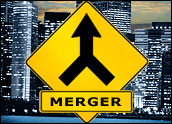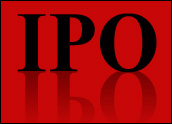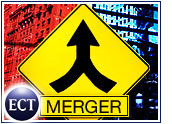
The London Stock Exchange Alternative Investment Market has been a resounding success. There are now more than 1,689 companies on AIM — more than on the UK’s official list. The LSE promotes AIM as the most successful growth market in the world when marketing itself to international companies.
Much of AIM’s success is due to the implementation of U.S. Securities and Exchange Commission regulations, such as Sarbanes-Oxley, which has caused many U.S. and other international companies to choose AIM rather than a U.S. exchange. Where our SEC is sometimes overprotective, looking out for the best interests of investors and shareholders alike, the AIM regulators have more of a “don’t worry about the mule going blind — just load the wagon” kind of attitude.
Not Without Casualties
At last month’s World Economic Forum held in Davos, Switzerland, John Thain, former CEO of the New York Stock Exchange, took a direct shot at AIM for what he considered as a lack of regulatory guidance. He was quoted as saying “AIM did not have any standards at all and anyone could list.”
The London Stock Exchange chief executive, Clara Furse, who recently fended off NASDAQ’s (National Association of Securities Dealers Automated Quotation System) latest hostile purchase offer of US$5 billion in December, responded curtly, emphasizing AIM’s overriding principle: that it is centered on providing emerging growth companies with listing on an exchange and access to the capital markets and that regulation of the market has been designed to balance those needs with those of investors who require adequate regulatory comfort. She emphasized that the role of the nominated advisers, or nomads, as central to the operation, regulation and success of AIM.
Though AIM has become the most easily accessible exchange to become listed on, it is not without its casualties. Great success does not come without a few failures. However, the results for the most part have been positive for both AIM and the companies that have listed with them.
AIM is designed primarily for emerging growth companies that have a global reach and a higher investment risk. AIM is somewhere between an OTCBB (Over the Counter Bulletin Board) and a listing on the NASDAQ small cap. However, the listing rules are significantly different than listing in the U.S. markets.
AIM Overview
AIM, operated by the London Stock Exchange, tends to work best for companies that have a capitalization and valuation from $20 million to $300 million. Filing or entry costs — excluding fund-raising — are approximately $600,000, with ongoing yearly costs of around $100,000. Capital-raising activities tend to be in the $4 million to $40 million range with the average cost of capital at approximately 9 percent. Investors are largely institutional; however there is a higher percentage of retail investment than on the official list. Substantial investor tax benefits may be applicable as AIM stocks are deemed “unlisted” and “unquoted.”
The nominated adviser acts as the sponsor or representative of the company who will be listed on AIM. The nomad prepares the prospectus and gets the issuer admitted for trading on AIM. The nomad also assists the company is raising its initial capital, the sweet spot being the $10 million to $20 million range. Nomads may also (through its brokerage and research departments) provide market making and research for the issuer’s stock. The contractual arrangements and relationship between the issuer and its nomad extends well beyond the initial public offering. Unlike its U.S. counterparts, the nomad is still active after the initial listing on AIM so that a small issuer does not end up being a stock market “orphan,” as is often the case in the U.S.
On Feb. 20, 2007, the AIM instituted some new rules for nomads and companies listed on the AIM exchange. The rules were implemented to give further guidance and clarity to regulatory issues concerning disclosure requirements. Although the changes to AIM rules are evolutionary rather than revolutionary, Nomads should not under-estimate the Exchange’s emphasis on the responsibility of nomads for preserving the reputation and integrity of AIM.
In the U.S., the IPO or DPO (direct public offering) prospectus has to go through several SEC comment letters and responses before the company’s registration statement can become effective (approved). The Company must then either file a 15-C2-11 with FINRA to gain trading status on the OTCBB or, if sponsored by a broker dealer, it must qualify for listing on NASDAQ.
The Benefits
The process is much more simplified to list on the London Stock Exchange. There is no regulatory authority in the UK — it is the responsibility of the sponsoring nomad. As a result, the entire process is substantially faster and cheaper than a comparable transaction in the U.S. The prospectus must fully disclose all information that an investor needs in order to make an informed investment decision. In most cases the prospectus is generally less comprehensive than an SEC-filed registration statement and the review process, for the most part, is non existent.
In conclusion, the biggest difference between a U.S.-listed company and an AIM listed company is NO Sarbanes-Oxley compliance. Listing on AIM eliminates the SEC governmental review process of the prospectus, the multitude of periodic regulatory filings and mandatory financial reporting requirements.
The reason U.S. and foreign companies are flocking to AIM is because the companies can not find underwriters in the U.S. Why? Because their deals are too small and the inherent risk is too great for the underwriter! There is a reason the average IPO in the U.S. last year raised an average of $229 million. Those stats reveal a couple of startling realities: a) underwriters are only interested large deals and b) the average company going IPO in the U.S. has an approximate market cap of $800 million. This leaves emerging growth companies with very fewer options. If a company can not qualify for listing on a U.S. exchange, they have three choices:
- Go public via a Direct Public Offering (“DPO”). This involves no broker dealer and the company is the issuer. This process can upwards of one year. The company can then try to raise capital via a PIPE (Private Investment in Public Equity) transaction once they are trading on the OTCBB.
- Back your company into an OTCBB shell. It is fast and you can be public in about 60 to 90 days. You can then raise capital via a PIPE transaction.
- Listing on AIM gives an emerging growth company the opportunity to go public and raise capital for reasonable fees and under reasonable terms and conditions. The only downside to listing on the AIM is that you are basically nonexistent to U.S. investors and no exposure to the U.S. capital markets.
Ralph Amato is founder and CEO of Ventana Capital Partners, which specializes in reverse shell mergers. He can be reached at [email protected].
















































Social Media
See all Social Media